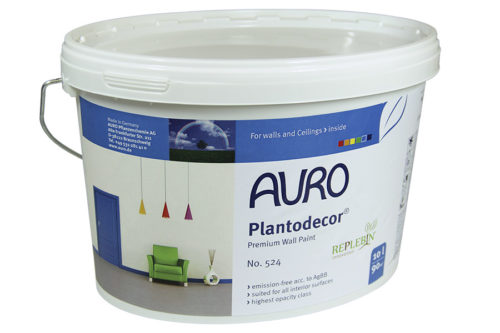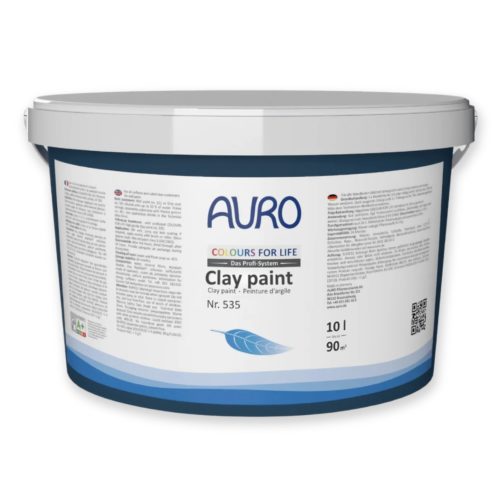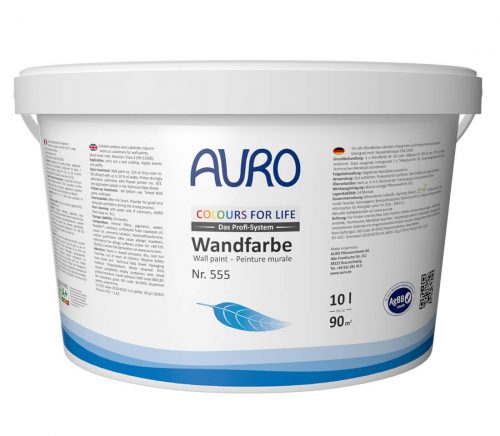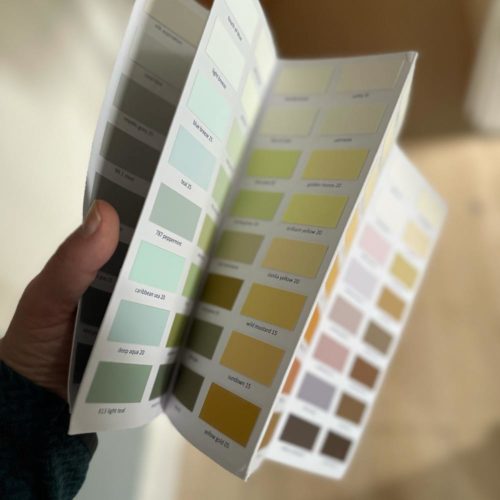Many people experience unpleasant side effects during and after painting their home. This is generally due to allergies and sensitivities to harsh chemical ingredients included in petrochemical based products.
This guide will take a look at what chemicals in modern paints can affect your health, the air quality inside your home, and the environment.
When paint is drying, it releases vapour. Sanding old paint can also release dust into the air whilst you're decorating. In the short term, this can cause sore throats, stinging eyes, headaches, and nausea – particularly when a room is poorly ventilated. Asthma sufferers, and anyone with a respiratory condition might experience unpleasant side effects due to paint fume exposure.
What's in a Tin of Paint?
A tin of paint typically contains binders, pigments, additives, and solvents. All the ingredients work together to create the desired function and finish of the paint.
- Binders – These are the adhesive that hold all the paint ingredients together, and help the paint bond to the surface being decorated.
- Pigments – Pigments create the colour in paint, and also help determine quality of coverage.
- Solvents – Liquids added to the paint to keep it fluid during application and to ensure smooth & even finish.
- Additives – these are ingredients added to enhance specific properties. For example, biocides may be added to anti mould paint.
How to Read Labels and Data Sheets
If you want to understand exactly what's in the paint you're applying to your home, make sure you read the Technical Data Sheet (TDS) for your chosen paint finish. Here's some common information you'll find on there:-
- VOC figure – shown as grams per litre. Lower numbers typically mean lower emissions indoors.
- Pictograms and warnings – follow any CLP hazard statements on the label. Pictures of deceased wildlife and trees generally mean the ingredients might not be the best if you're sensitive to harsh chemicals.
- Allergy notes – look for mentions of isothiazolinones if you have contact allergies.
Harsh Chemical Paint Ingredients
Many paints contain harsh chemical paint ingredients which can affect the indoor air quality in your home for a considerable time after application. Here's a look at what's in those tins of paint at the local DIY store.
Synthetic Polymer Binders
Acrylics and vinyls are the backbone of most mainstream emulsions. They form a tough plastic film that holds colour and stands up to scrubbing. The catch is in the word plastic.
Over time these films can fragment, adding to microplastic pollution through weathering and maintenance. They start life as petrochemicals, which creates an adverse environmental footprint.
Alkyd Binders and Driers
Traditional oil based paints level and cure to a hard, glossy finish, helped along by metal based driers. They also come with that familiar solvent odour, which causes respiratory irritation and other health issues.
VOC Solvents
Solvents dissolve resins and make paint flow nicely. They also evaporate into the room while the paint dries. That can mean eye irritation and headaches when decorating your home, and outdoors those same vapours contribute to ground level ozone. If you want to sidestep the issue, pick water based mineral, clay or casein paints with low stated VOC on the data sheet.
Preservatives
Water based paints are food for microbes without a preservative. The industry solution is doses of isothiazolinones, sometimes backed by formaldehyde releasers.
Some are allergic to these harsh chemicals, and the compounds are very toxic to aquatic life if wash water reaches drains.
Biocides
Exterior and marine coatings often use biocides to discourage algae and slime. That chemistry can end up in the local environment as it leaches or abrades away. The synthetic biocides in anti mould paints can reduce in effectiveness over time.
High alkaline mineral finishes such as lime and silicate have natural mould and algae resistant properties. That means natural mould resistance will last as long as the paint finish itself.
Pigments
Titanium dioxide gives the strong white and hiding power most decorators expect, with iron oxides and carbon black supplying colour.
Our natural paint pigments create beautiful vibrant colour palettes without the chemical load in your home and on the broader environment.
Modern Paints & Microplastic Pollution
Modern petrochemical based paints are significant contributors to microplastic pollution stemming from their use of synthetic binders and additives.
Microplastics are entering the environment through particle release as the paint wears, the use of paint in marine environments and on boards, and from construction sites. Domestic users washing paint down sinks from brush and tool cleaning also puts microplastics into waterways.
How Natural Paints Work
Natural paints don't create pollution in your home or in the environment. Some can even be composted.
Here's a brief look at how these paints perform just as well as petrochemical based alternatives, without the environmental cost.
- Lime paints harden by carbonation. Slaked lime is a primary ingredient which reacts with carbon dioxide in the air to form calcium carbonate, creating a mineral film that remains highly vapour permeable once cured.
- Silicate paints use potassium silicate as the binder. They chemically bond to mineral substrates in a process called silicification, forming a mineral surface rather than a plastic film.
- Clay and casein paints rely on mineral or milk protein binders with water as the carrier, producing a soft matt finish and gentle natural moisture regulating properties.
Choosing Natural Paints
Do please consider using a natural paint in your next project. They're often no more expensive than premium petrochemical based paints, perform just as well, and are better for the health of your home and the planet.
Grab yourself a free paint colour chart, or contact us for more information on the natural ingredients in our paint, and how they can be used in your next project.






